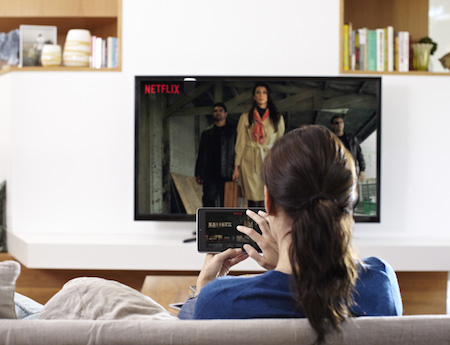Global Licensing Causing Challenges for Netflix

As Netflix expands overseas, it has encountered more difficulty than expected in buying global rights to TV shows and movies from the studios.
“It has not been an easy road,” said Netflix chief content officer Ted Sarandos speaking at the UBS Media Conference in New York Monday.
International expansion is a priority at Netflix. “We’re aspiring to take Netflix fully global,” Sarandos said, noting that it moved into Italy, Spain, Australia and Japan in 2015.
But he said Netflix has encountered issues in dealing with the studios as it tries to license content globally.
“There has never been a global buyer,” he said, adding that the studios are set up with regional sales organizations, and there’s resistance because the “regional sales staff don’t want their jobs marginalized. It’s a pretty big structural change that all of our studio and network partners are trying to manage.”
Sarandos added that he wasn’t seeking to buy globally in order to use Netflix’s scale to generate discount, but was using its scale to obtain availability of content. “We’re alone in this space of buying global rights,” he said.
Netflix continues to not give out information about how many people are watching its shows. Nielsen, which is aiming to measure all viewing, released some estimates of Netflix viewing. But Sarandos said he didn’t think the sample Nielsen used captured all Netflix viewing.
Broadcasting & Cable Newsletter
The smarter way to stay on top of broadcasting and cable industry. Sign up below
“Our shows are among the most-viewed shows on television,” he said.
Sarandos said that investors can gauge the success of its programming by tracking its subscriber numbers. Internally, the company tracks time hours of viewing per user.
He said the company continues to ramp up original programming, with the number of scripted shows growing to 31 next year from 16 this year. Netflix also has 10 feature films in production or about to be released, 30 kids shows, a dozen documentaries and 10 stand-up specials. “It’s not just a lot of volume. This is quality stuff,” he said.
Asked about Netflix’s interest in sports, Sarandos said that sports often comes up because cable bills are high and the main reason many subscribers also subscribe to cable is for sports.
Sarandos said he didn’t think the on-demand model enhances the sports experience and that the leagues have all the pricing power in that business. “It isn’t a core viewing strategy for us,” he said. He added that if Netflix could start its own sports league “that might be interesting, but that’s not what we’re chasing.”
Jon has been business editor of Broadcasting+Cable since 2010. He focuses on revenue-generating activities, including advertising and distribution, as well as executive intrigue and merger and acquisition activity. Just about any story is fair game, if a dollar sign can make its way into the article. Before B+C, Jon covered the industry for TVWeek, Cable World, Electronic Media, Advertising Age and The New York Post. A native New Yorker, Jon is hiding in plain sight in the suburbs of Chicago.










